Looking for a different event to add to your classic biking calendar? Try this one for size: a huge autojumble in Italy, which takes place in September. Perfect riding weather, brilliant roads – here’s what else RC regular Stu Thomson discovered when he attended this year…
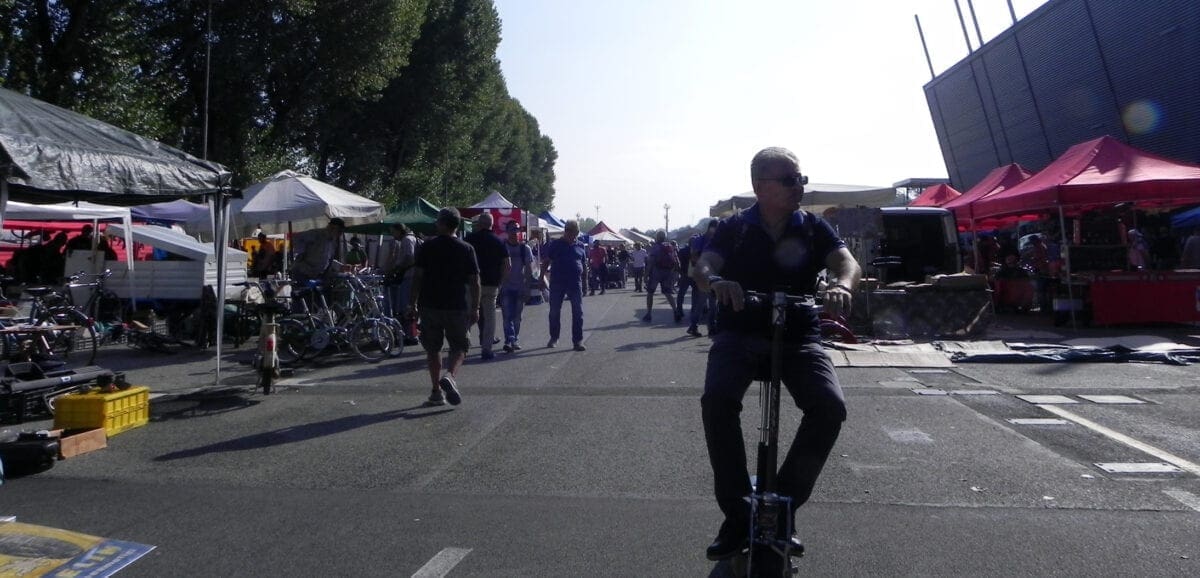
I have an interest in all things Italian where motorcycles are concerned, so we planned to visit the jumble during our holiday in France and Italy. Apart from a thunderstorm on the Friday evening, the weather over the weekend was extremely good – in fact maybe a little too hot for autojumbling. We stayed close to Ravenna, a nice, non-industrial city with a thriving port. It’s about 50km away from the circuit; useful because accommodation close to Imola can get booked up very early. At the end of season there’s still some space in the campsites by the beach. A two-star hotel room costs €42-50 per night. We stayed in a self-catering beachside cabin for €212 for four nights with lots of space – and even air conditioning.
The area around Imola seems to be a centre of fruit production – apples, pears, plums, kiwi, etc – and they are just beginning to pick when the autojumble is on. So the backroads can be blocked sometimes with tractors pulling the full fruit crates. The circuit is on the Via Santurno in Imola, right next to the town. It normally opens noon on the Friday, 7.30am on the Saturday, and finishes at 6pm on Sunday. Admission is €10 euros per person per day. It’s advisable to get there early, before 9am, as parking is… ‘interesting’. Most of the parking spaces on Imola’s circuit is taken up with the stallholders’ vehicles.
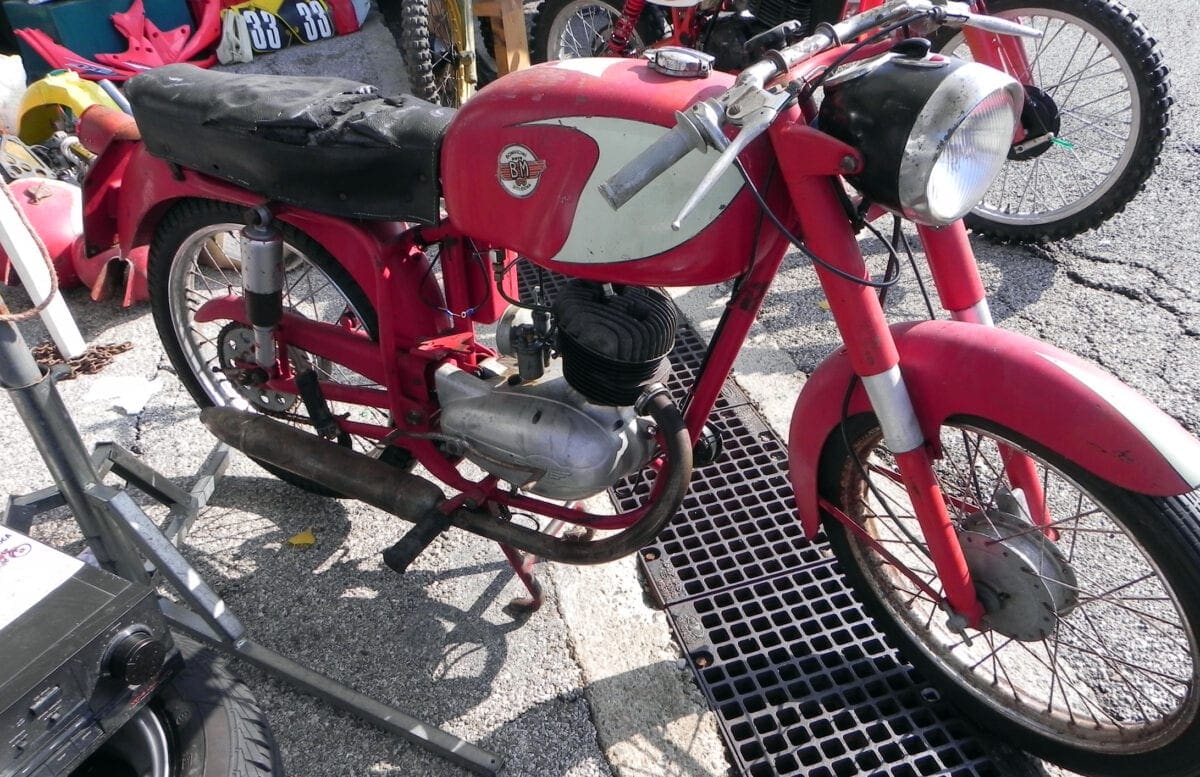
A typical little Italian for sale at the Imola autojumble. It’s a 125 Bonvicini, built just down the road in Bologna. This two-stroke DKW clone was favoured by many smaller Italian manufacturers in the early 1950s
If you’ve been to autojumbles in the UK like Beaulieu, Netley Marsh or Newark then you might think that you would be prepared. Well, Imola is really something else.
The whole length of the circuit has stalls on both sides, plus the pits and the parking area. It seems to be one of those events that the whole of Italy head for… along with visitors from the UK, Belgium, France, Croatia, Slovakia, Spain, USA – just about everywhere else.
Wise browsers have shopping trolleys for collection of their purchases, or bicycles to get around as carrying stuff and getting around the circuit is pretty tiring. There are also little trains which can take you around. I wasn’t aware that the circuit was hilly – maybe not as hilly as Cadwell Park, but certainly not flat. I saw two people carrying a Motobi twin engine between them and having to stop every 30 metres or so…
My other recommendation is that you need two days as one day doesn’t do the place justice. We were there for nearly seven hours and didn’t see everything. Also, take a packed lunch as the Italian offerings may not be to your taste.
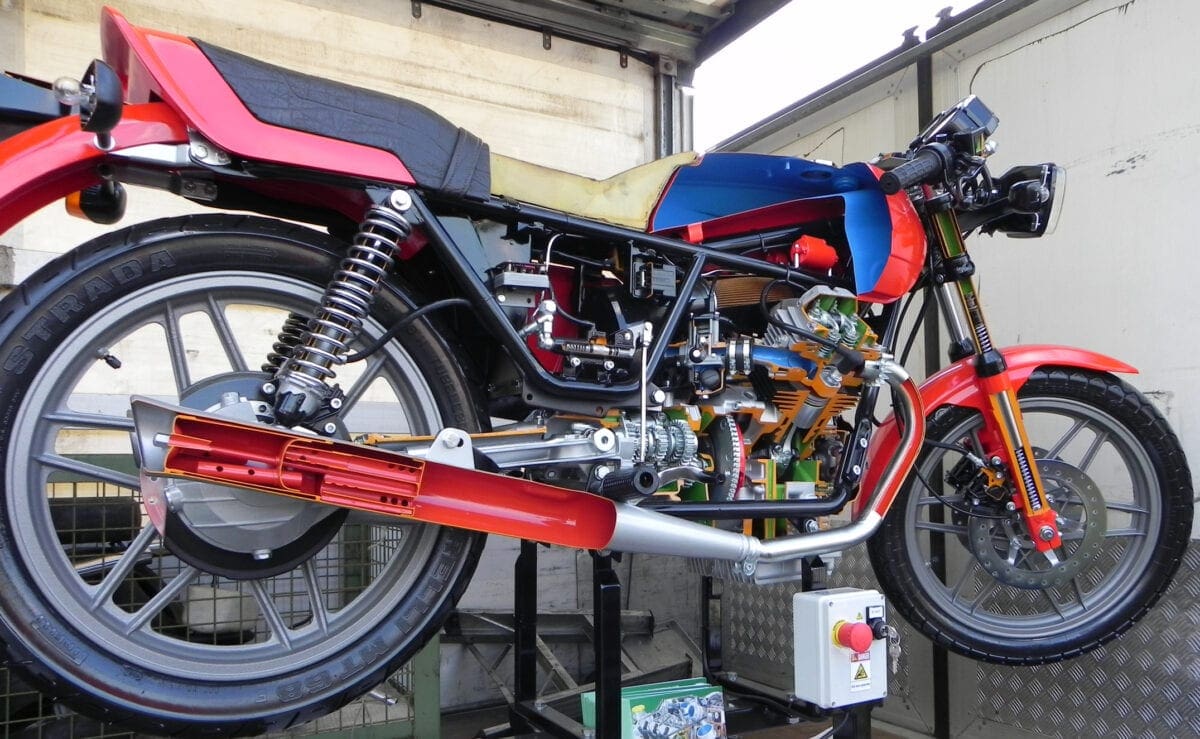
One of the more unusual classic Italian motorcycles on display – a cut-away Moto Guzzi V50 Monza. It even ran (with the help of an electric motor)
Once you’ve crossed the Channel, Imola is about 1400km depending on your route. The Alps get in the way so you have to go over the passes or through tunnels. That makes it a two-day trip to get there and two days back, plus motorway / tunnel tolls. Altogether this means it’s not a cheap undertaking, unless you share costs with like-minded buddies. You can make it part of a motorcycling holiday, visiting places like the Guzzi museum in Bologna.
Overall, Imola’s autojumble is worth it for the experience. Unfortunately there are some con artists on the circuit with accomplices, trying to fleece people with the pea under the cup trick, but the police try to put them off. Just don’t fall for it and get conned…
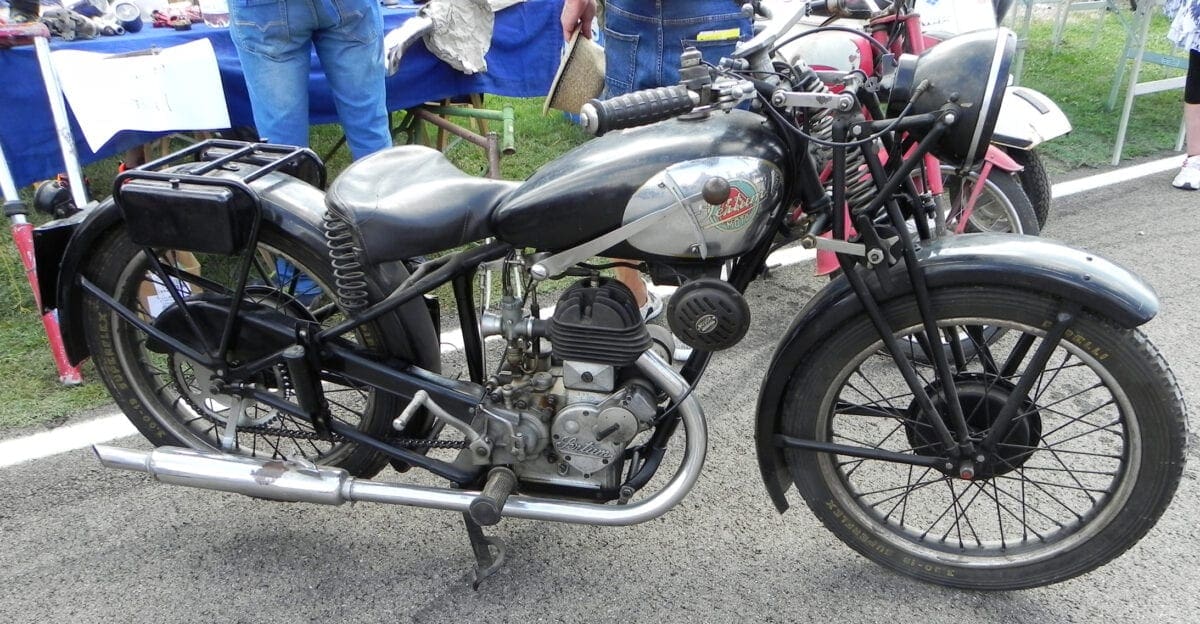
There weren’t many pre-war machines for sale, and this hand-change, sidevalve Sertum is doubly unusual. It even has a right-side kickstart, rare on Italian bikes. It could almost be a BSA…
As you might expect, the majority of the parts are for Italian motorcycles, bicycles and cars, plus tools, a few antiques and a few Japanese and British parts and bikes – but overall not many compared to the Italian stuff. I saw one Velocette for sale; a 350cc MAC for €7950 which by UK standards was well overpriced. And a few Matchless machines – probably left over from the war.
Imola seems to be the time when the Italians clear their sheds, fields and henhouses (judging by the state of some of the stuff) and bring anything auto-related they have lying about.
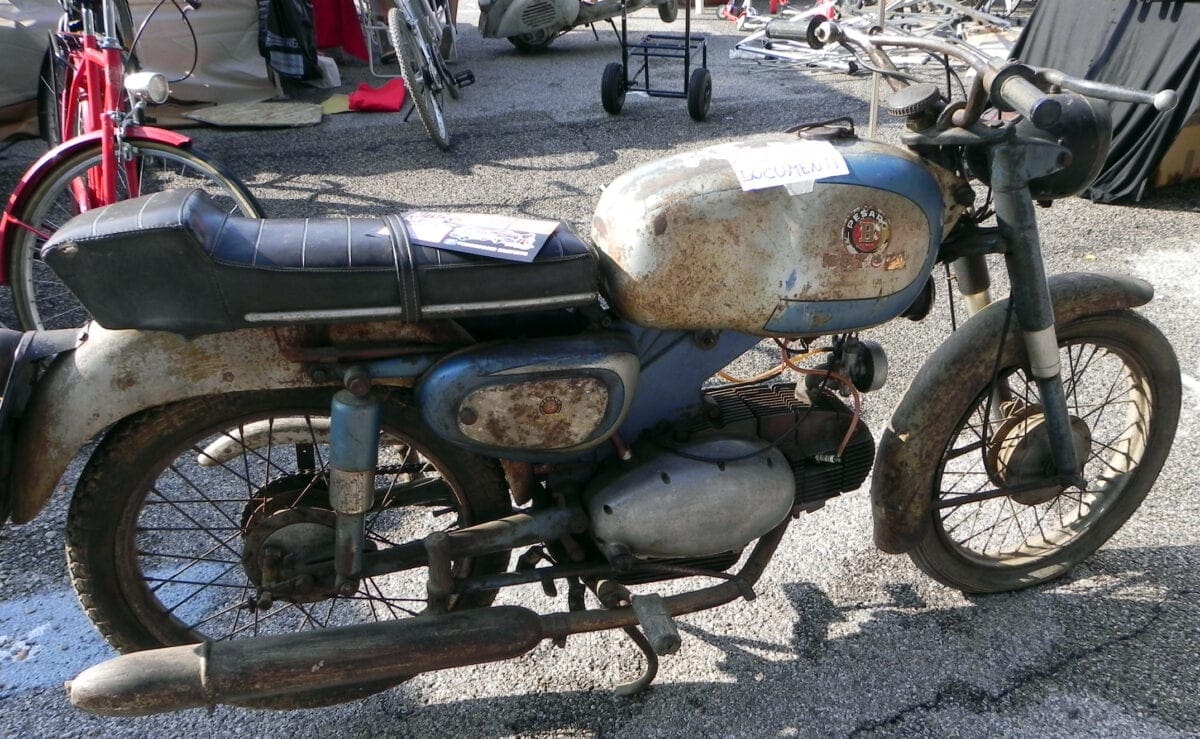
A good starting point for a restoration project; in its original paintwork. Bikes can be described as ‘con documenti’ (with documents ) or ‘con libretto’ (with logbook)
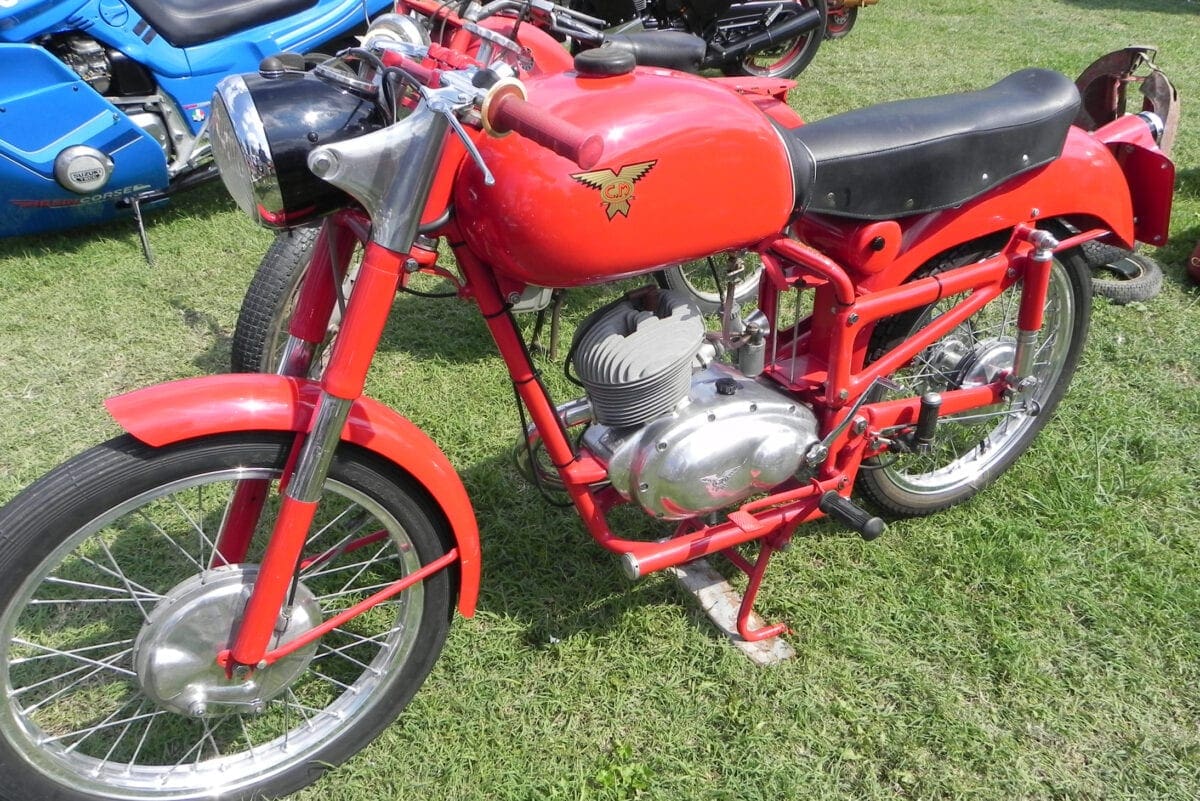
This is a CM 125 two-stroke; superbly finished. Note the interesting swinging arm suspension: the rear ‘shocks’ are just dampers. The springs live in the horizontal tubes under the engine. The bike was up for €3500
It is possible to grab a bargain but Italians know their bikes and sometimes have a rather inflated opinion of the value, especially the dealers. The best bargains are to be found with the older guy who has a couple of bikes from his collection that need refurbishment.
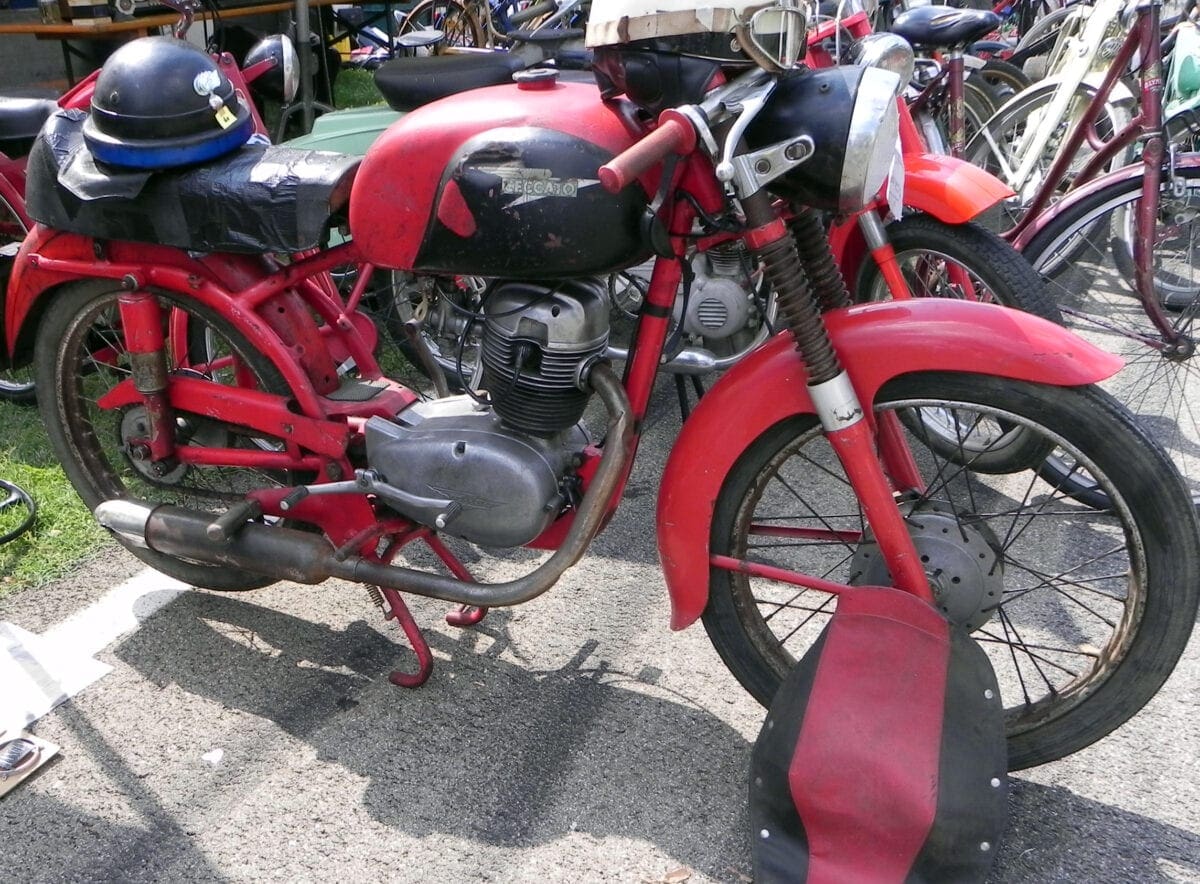
This Ceccato 125 four-stroke needs some work, and spares may be rather difficult to obtain even at Imola. For parts (like the missing upper shrouds) can be impossible to track down
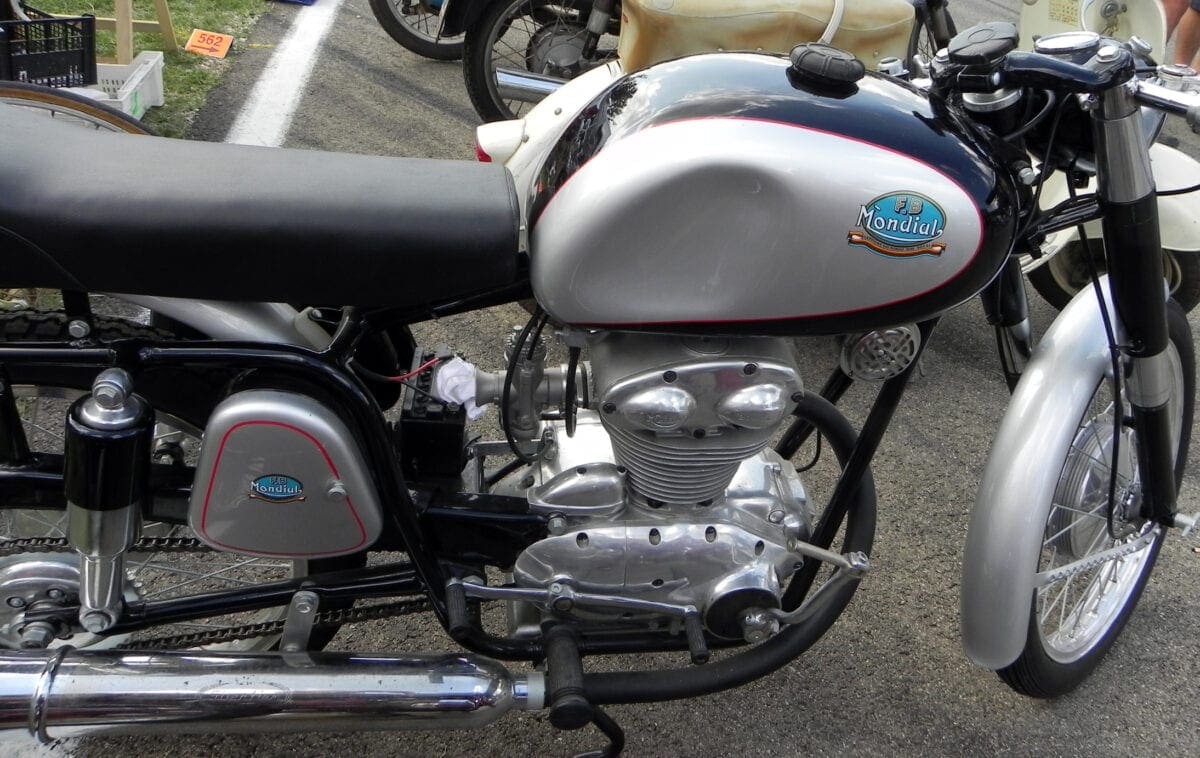
If you need to ask the price of this cammy Mondial 175 then… you can’t afford it.
Along with many standard bikes, in need of rebuild or already restored, there are a few specials on display. My favourite was a dohc Guzzino of just 73cc.
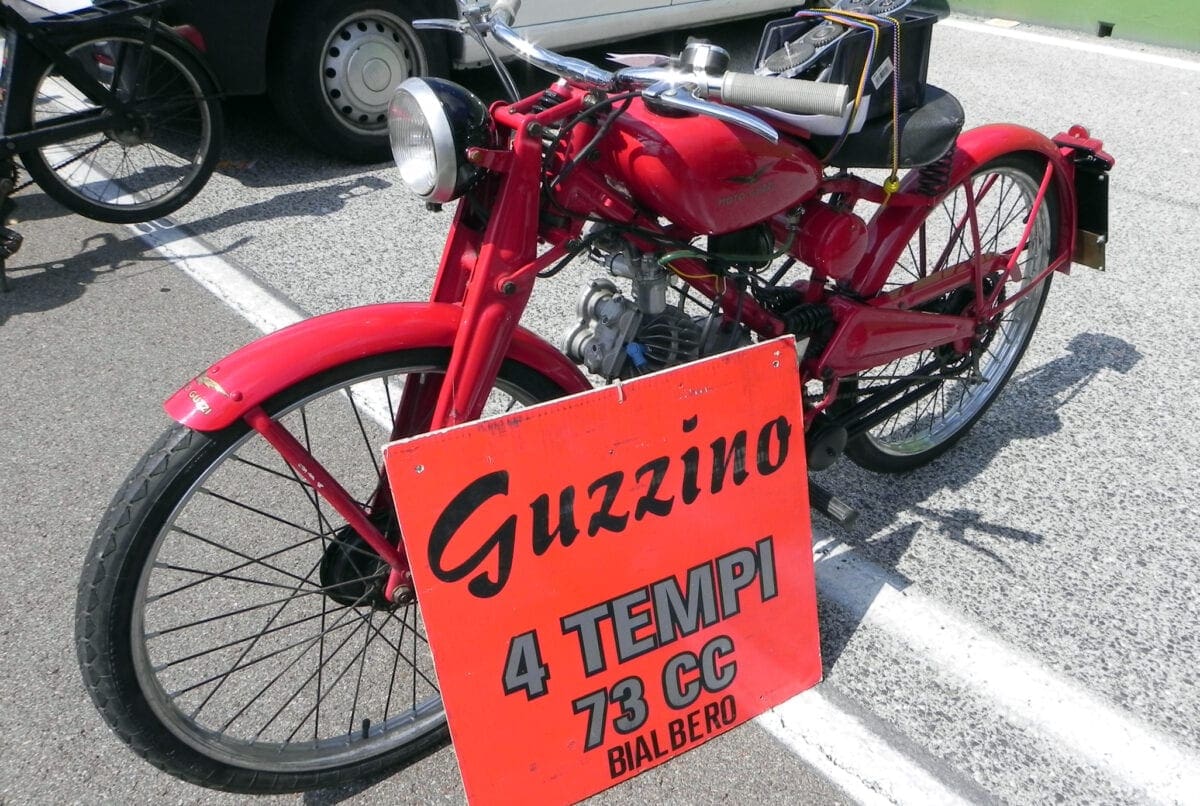
Why would anyone do that? Some Italians just love their small capacity bikes so much they just lavish care and engineering on them
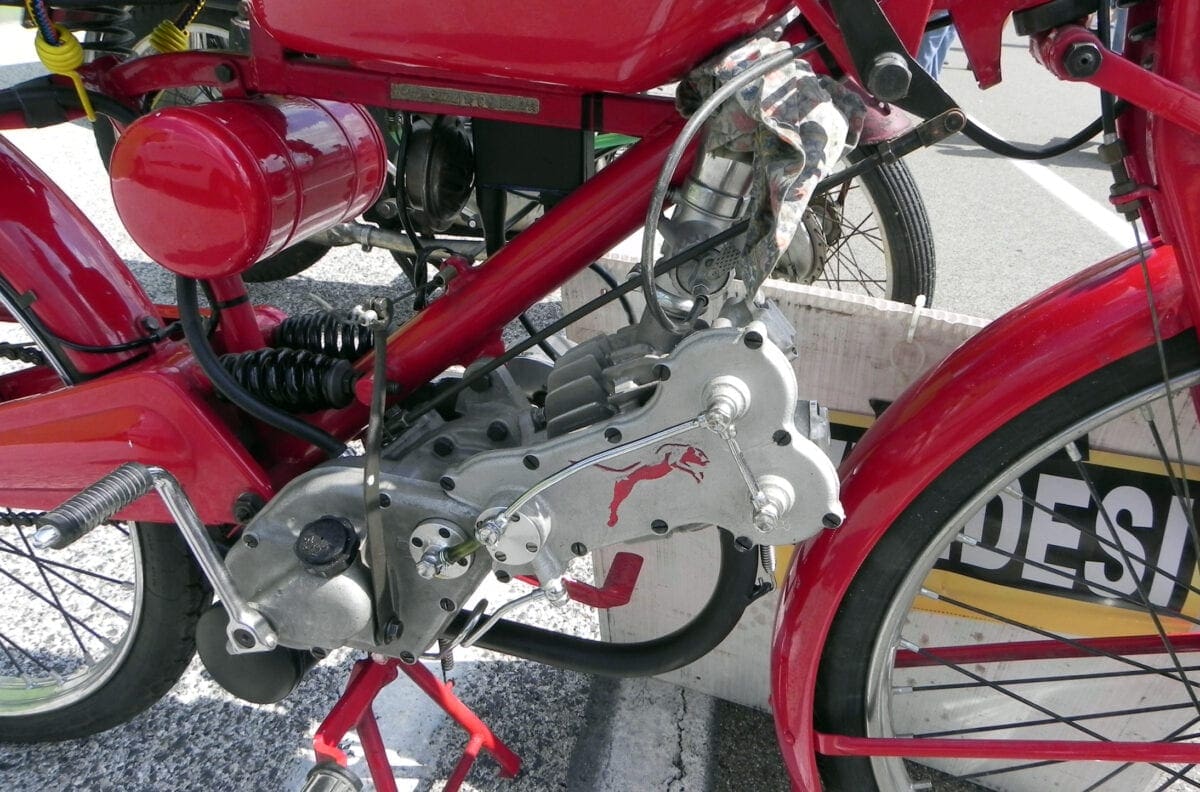
Not much more than a moped, and now with double overhead cams! And a rather large carb…
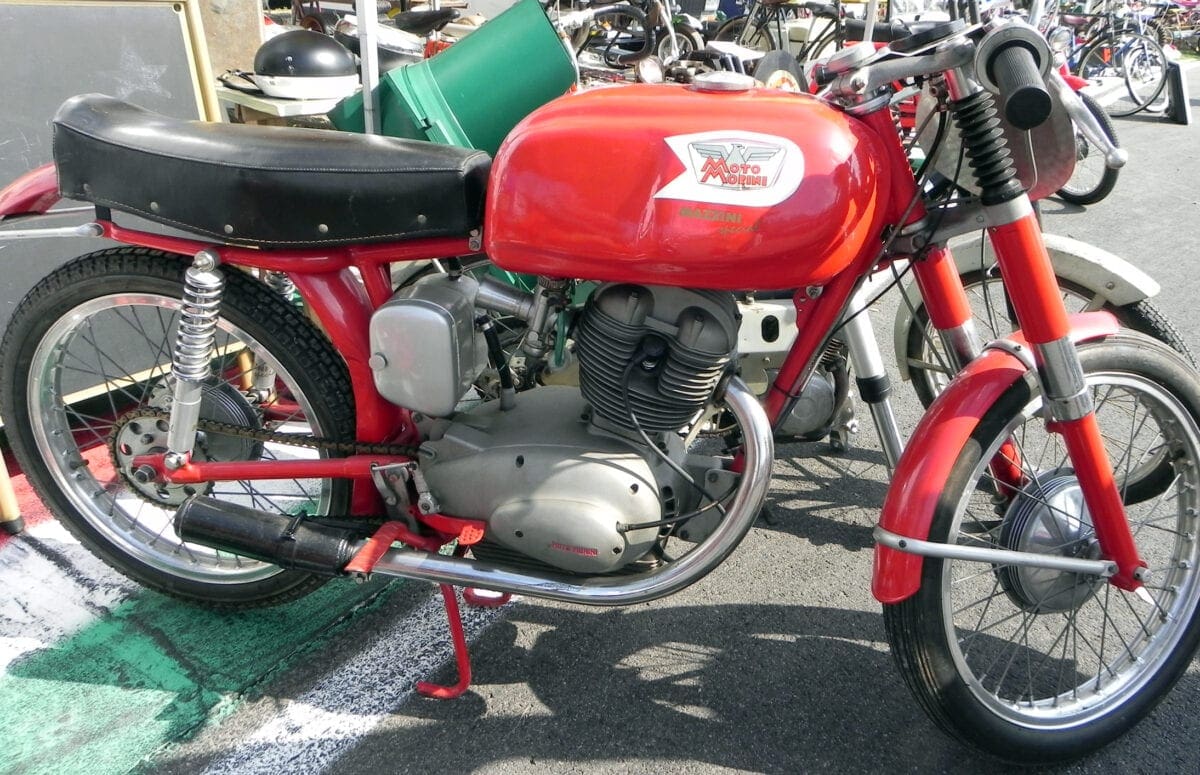
Another special: a Mazzeni Morini 250 Settebello on which the gearchange and brake have been swapped to opposite sides
Unfortunately (surprisingly!) I did not buy anything. The bike I was really keen on – a Bianchi Tonale ohc 175 had been sold. Maybe if I’d gone back on the second day and seen everything I would have found something else I liked. The Ceccato was tempting and there was a nice Motom 48cc for €600 euros which could have been haggled down a bit. There were also a few unusual bikes which I had never seen in the metal before, like a Ferrari and a Maserati; but they didn’t look any better than most of the other bikes around.
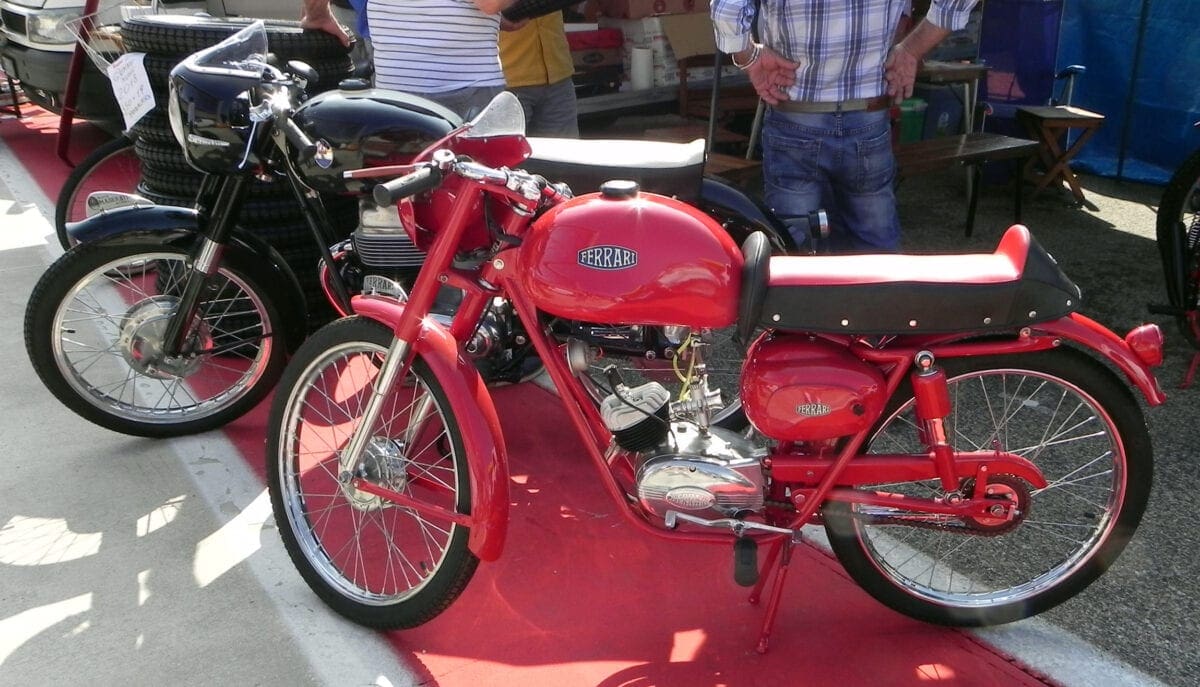
The Ferrari was a small two-stroke and the Maserati a four-stroke 175: nice, but nothing exceptional
There seemed to be more Morinis and Gileras than any other marques; testament perhaps to the build quality of the Morinis and quantity of Gileras made and sold. There were quite a few Mi-Val machines, a rare beast in the UK, in need of rebuilding.
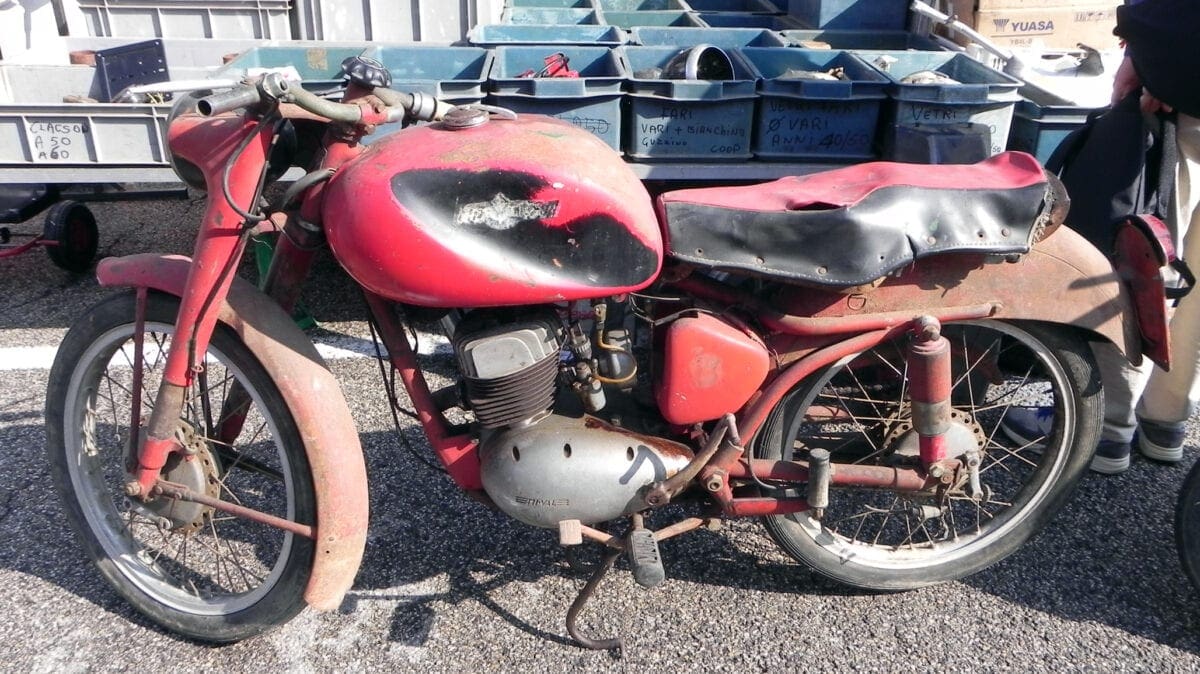
A Mi-Val 125 GL from about 1954, similar to the one which Stu restored in a series in the magazine. This one is ‘in need of a loving owner for lasting relationship.’ The petrol tank appears to be from a later, four-stroke model, but under the rust and dust everything else was all there
There were very few pre-war machines for sale. These seemed to only be in collections and club stands. Many early Bianchis and Moto Guzzis were made but they seem to be hidden away. The most popular bikes for sale were from 1950, with just a few Bianchi Bianchinis from the late 1940s.
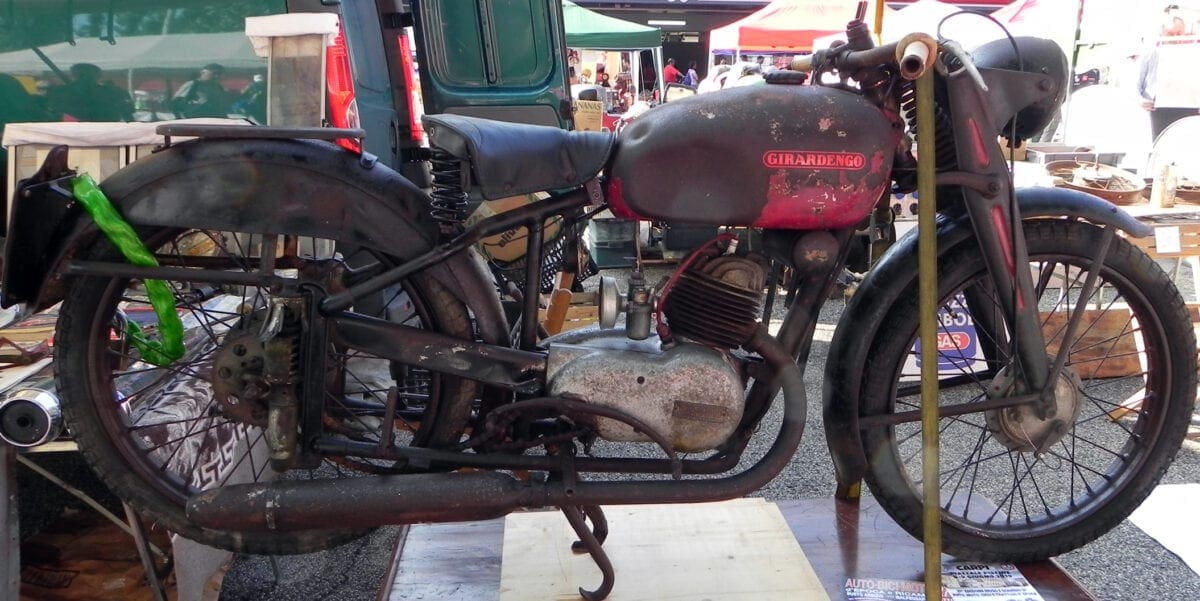
One of the few machines dating from the late 1940s / early 50s; a two-stroke Girardengo with plunger rear suspension and central sprung, girder-type forks
In the UK, we tend to think of three or four big Italian marques (Ducati, Guzzi, Laverda and the like) but I saw and photographed 36 different makes of Italian motorcycle. I’m sure there were more that I missed!
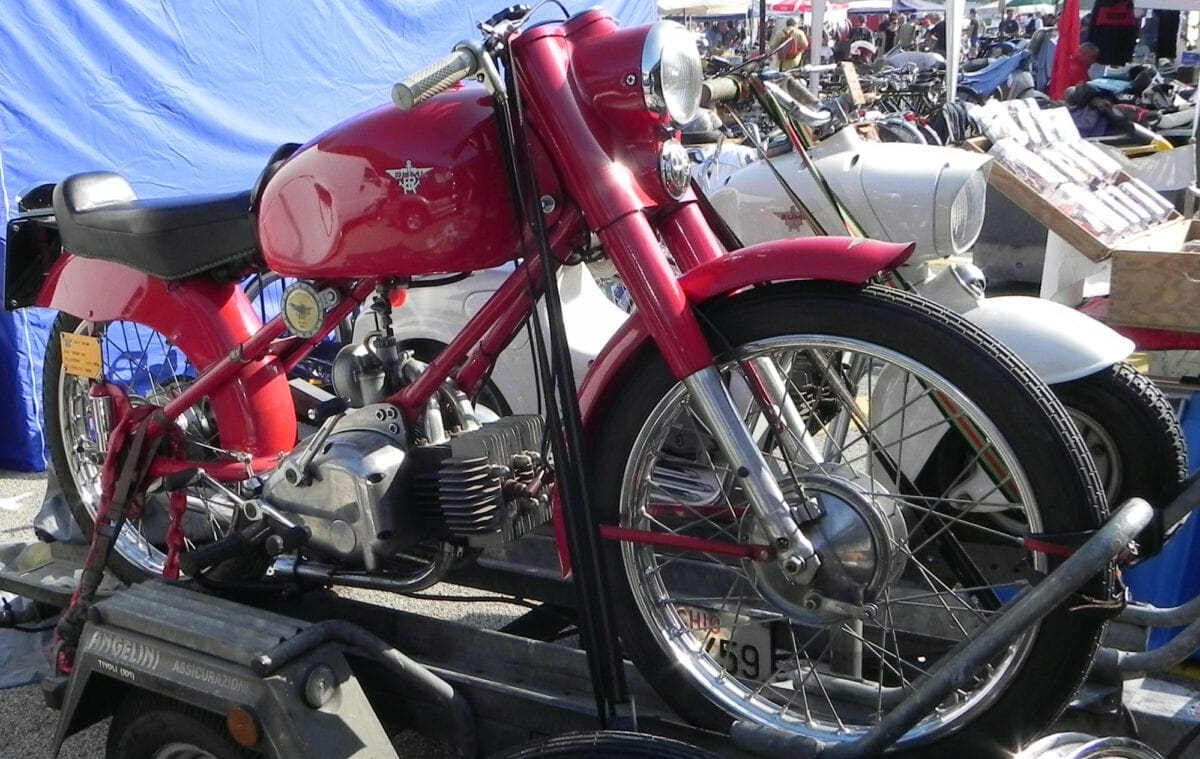
Here’s an unusual Moto Rumi, a twin-cylinder two-stroke with its ‘forward kickstart’ engine acting as a stressed member of the frame
There weren’t many high-capacity bikes on display or up for sale, as the majority of Italian motorcycles were of a small capacity. A large Italian classic is usually a 175 or a 250. There was one really nice bike being shown by its proud owner; a Parilla 350cc parallel twin.
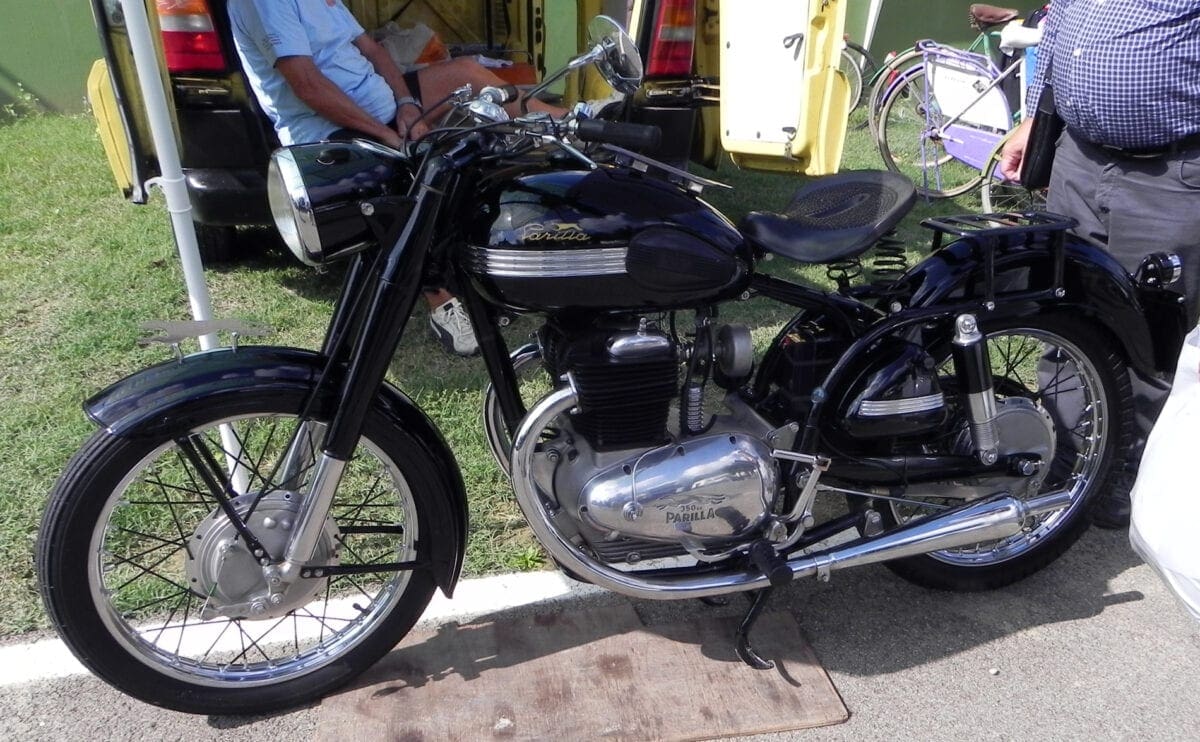
This counts as a big bike at Imola: a 350 twin. It almost looks like a Triumph from the mid-1950s with those chrome bands on the petrol tank…
So if you feel like a holiday in September with a motorcycling connection – not too far from the beach – Imola could be ideal. I for one will certainly be going back, but a little more prepared the next time!
———
Words and photos by Stu Thomson
Stu has restored several intriguing little Italians and you’ll find his rebuild features appearing frequently in the magazine




